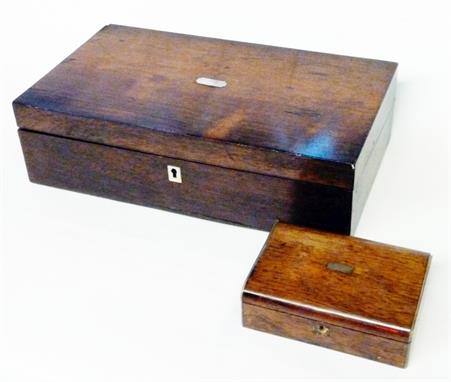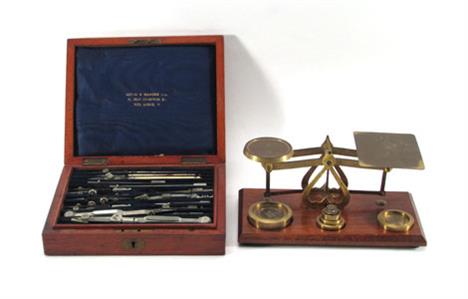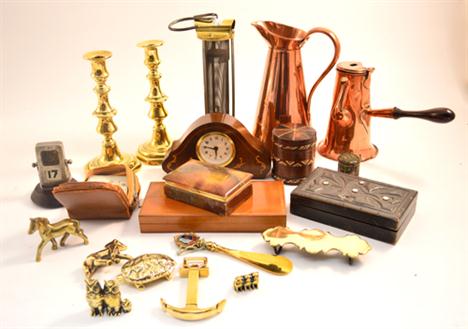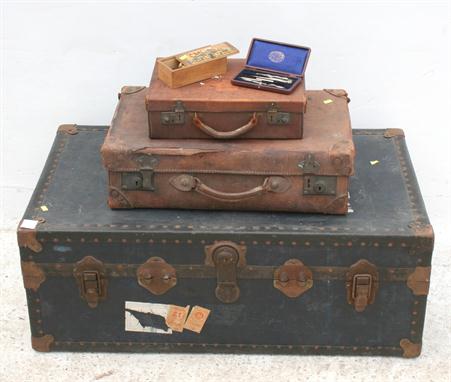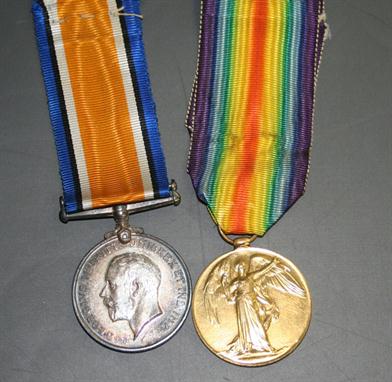We found 749 price guide item(s) matching your search
There are 749 lots that match your search criteria. Subscribe now to get instant access to the full price guide service.
Click here to subscribe- List
- Grid
-
749 item(s)/page
A set of three copper engraved prints after Girard Thibault (1574-1629), ‘The Academy of the Sword’, depicting swordsmen in interiors with instructional directions, later framed and glazed, 72cm high, 90cm wide overall. Gerard (or Girard) Thibault d’Anvers, was poet, physician, architect, painter, occultist, and master swordsman. He astonished the courts of Europe with a new system of swordsmanship based on the principles of sacred geometry and Renaissance occult philosophy.
1594 RECORDE, Robert. / DEE, John. / MELLIS, John. The ground of Artes, teaching the perfect worke and practice of Arithmaticke, both in whole numbers and fraction, after a more easie and exact sort than hitherto hath beene set foorth. And now diligently corrected and beautified with sundry new Rules and necessary additions: And further endowed with a third part of Rules of Practise .… as are incident to the Trade of Merchandise. Printed by T.D. for John Harison, London. 8vo. With abacus-like woodcut illustrations on thirty six pages. Contemporary vellum with gilt lettered title on spine. Early ink doodlings and trial sums in some margins, occasional staining but a good copy. The 17th of 29 STC and 13 Wing printings. The earliest surviving edition of what is the first book in the English language dealing with arithmetic is dated 1543. It came from the pen of a "D in Physicke" who was a graduate of both Oxford and Cambridge. He was the founder of the English school of mathematical writers as aside from this work he also wrote on geometry and was the first to introduce algebra into the country. His switch over from the officially used Roman numerals to arabic numbers contributed to his success and this went through a multiplicity of 16th and 17 century editions. The corrected edition of 1561 was done by John Dee while the schoolmaster John Mellis added a third part [here found with a separate titlepage] in 1582. This final part of which this is the fourth printing is important in that it deals with merchants trading, rules of three, loans and interest, barter coins etc and even "Sportes and Pastimes done by number" There was no Dublin printed text book on "double entry" accountancy until close to the end of the 17th Century. Provenance: The estate of Tony Sweeney
Roderic O`Conor (1860-1940)LA MAISON DU PENDU AU POULDU, BEACH WITH CLIFFS AND A YACHT, 1893 and DEUX FEMMES DE PROFIL DANS UN PAYSAGE (SET OF 3)etching; (2); lithograph; (1)the first, stamped within the image lower right; inscribed [1/30 / Tirage 81] in pencil in the margin lower right; the second, signed and dated in the plate; the third signed in the plate lower leftLandscaPortraite5.5 by 9in., 13.75 by 22.5cm.Deux Femmes de Profil dans un Paysage: Purchased by Mervyn & Pat Solomon, 1984La Maison du Pendu au Pouldu: Musée de Pont-Aven, 1984, catalogue no. 78 (another edition) (illustrated p.53)Deux Femmes de Profil dans un Paysage: L`École de Pont-Aven dans les Collections publiques et privées de Bretagne, Musée Des Beaux-Arts, Quimper, Rennes, Nantes, 1978-1979, catalogue no. 74 (illustrated); Musée de Pont-Aven, 1984, catalogue no. 84 (illustrated p.53); `Roderic O`Conor 1860-1940`, Barbican Art Gallery, London, Ulster Museum, Belfast, National Gallery of Ireland and Whitworth Art Gallery, Manchester, from September 1985 to May 1986 (all other editions)La Maison du Pendu au Pouldu:Johnston, Roy, Roderic O`Conor 1860-1940, Barbican Art Gallery, London and Ulster Museum, Belfast, 1985, catalogue no. 102 (illustrated p.113); Benington, Jonathan, Roderic O`Conor, Irish Academic Press, Dublin, 1992, catalogue no. 419, illustrated p.56Deux Femmes de Profil dans un Paysage:Jaworska, W., kregu Gauguina malarze szkoly Pont-Aven, Warsaw, 1969; English translation, Gauguin and the Pont-Aven School, Boston, 1972, p.224 (illustrated); Johnston, Roy, Roderic O`Conor 1860-1940, Barbican Art Gallery, London and Ulster Museum, Belfast, 1985, catalogue no. 114 (illustrated p.113)The lithograph within this lot is one of only two examples known in this medium. It is thought to have been printed in 1898. Dimensions of Beach with Cliffs and a Yacht, 1893 and Deux Femmes de Profil dans un Paysage, 9.75 by 15.25 and 7.50 by 6.75ins., respectively.An edition of Deux Femmes de Profil dans un Paysage can be found in the collection of Musée Des Beaux-Arts, Quimper.This group of eleven oil paintings and etchings by Roderic O`Conor spans thirty years of the artist`s career, encompassing many of his favourite subjects and deploying the entire repertoire of expressive gestures and marks and the high-keyed palette for which he has become famous. The collection moves in time as well as place: from the windswept rocky coastline of Finistère in 1893 (see lots 42 & 44), to the shaded, tree-lined roads near Barbizon in 1902, to the life models and domestic objects of O`Conor`s Parisian studio, and finally to the craggy peaks of the Côte d`Azur. There is even a work that melds the normally distinct genres of figure and landscape, namely the lithograph Two Women in Profile in a Landscape (lot 42), the descriptive title of which belies its innovative conception and its boldly simplified forms.O`Conor`s experimental rigour pervades this entire group of works - he was never a man to go for the easy option of academic realism. With their impulsive, whipped lines, the four etchings evince the clash of the elements on the storm-torn coast of Brittany, an alien and barren terrain that acquires, at the hands of O`Conor, the appearance of a lunar landscape. When he positions the horizon line lower down the copper plate, he manages to make even the clouds appear tortured. At this early date (1893), the Irishman was looking to Van Gogh for inspiration, especially the rhythmic bands of pure colour that energised the Dutchman`s St Remy and Arles landscapes. In 1908 O`Conor would pay verbal tribute to Van Gogh`s paintings as wonderful examples of expression of character pushed to the point of hallucination." Just a few years earlier, on a visit to Montigny-sur-Loing, he articulated the foliage, sky and grassy bank of his oil painting, Avenue of Trees (lot 39) with alternating stripes of colour, just as he had done a decade earlier in Pont-Aven.Whilst the predominant mood of these early works might be characterised as controlled anarchy, at least in the handling of paint, O`Conor was also capable of extracting subtlety and understatement from his colours. This is nowhere more apparent than in Chrysanthemums (lot 38), dating from 1896, when he was rethinking his art in the solitude of the little Breton town of Rochefort-en-terre. Here the feathery touch and carefully orchestrated colour harmonies (red predominating) recall no-one so much as Auguste Renoir, who visited Pont-Aven with his family in 1892 and was eulogised in the exchange of letters between Armand Seguin and O`Conor later in the decade. Similarly, the way O`Conor contrasts the softly blended brushstrokes describing the limbs and torso of the nude in Nu allongé (lot 37) with a more painterly approach in the foreground recalls Renoir`s late paintings of bathers.O`Conor`s affinity for the primitive life Brittany offered sometimes found an echo in pictures from his early years in Paris. In Nature morte (lot 36) of 1909, hand-painted Breton faïence, a white napkin and some fruit are partnered with an English posset pot, creating a homely assemblage that recalls, in its carefully articulated geometry, Cézanne`s famous admonition to "treat nature by means of the cylinder, the sphere, the cone." A few years later in date, the small panel painting Montagne Sainte-Victoire (lot 43) demonstrates how the lure of the South, as celebrated in Cézanne`s landscapes of his native Aix-en-Provence, became too much for O`Conor to resist. Here, using colour modulations at the expense of detail, he achieves the monumental, notwithstanding the small scale. In the years following the WWI, O`Conor continued to paint female models and still lifes, albeit without returning to the Post-Impressionist idiom of his pre-war years. This new development is demonstrated to good effect in Seated Model (lot 40), where the dramatic transverse lighting and the use of the palette knife to accentuate the modelling of forms are in keeping with the methods of the so-called École de Paris - painters such as Dunoyer de Segonzac, Chaïm Soutine and Maurice de Vlaminck. In the background of O`Conor`s portrait one can just glimpse his cast of Daumier`s bronze sculpture, Les emigrants, as if by way of homage from one dedicated interpreter of the human clay to another.Jonathan BeningtonFebruary 2013"
Roderic O`Conor (1860-1940)HOUSE ABOVE THE CLIFF, SUNLIGHT THROUGH THE CLOUDS and LE VERGER, c.1893 (SET OF 3)etching; (1) etching and drypoint; (2)the first with Barbican Art Gallery exhibition label on reverse; the second signed and dated in the plate lower right; inscribed [2/30/ Tirage 81] in pencil in the margin lower right; third signed in the plate lower leftLandscaPortraite10.5 by 13.25in., 26.25 by 33.125cm.(First) possibly, Hôtel Drouat Salle I, Paul Renard;The Collection of Mervyn & Pat Solomon(First) Pont Aven 1984 (another edition); London, 1985 (another edition)(Second) `L`estampe en Bretagne`, Musée des Beaux-Arts, Nantes, 1974, catalogue no. 145; Quimper, 1978, no. 72); Pont-Aven, 1984, no. 71; London, 1989, no. 0.7; Paris, 1989, no. 134 (other editions)Benington, Jonathan, Roderic O`Conor, Irish Academic Press, Dublin, 1992, catalogue nos. 441 and 430, respectively (both illustrated p.55); Johnston Roy, Roderic O`Conor, catalogue de l`oeuvre grave, Musée de Pont-Aven, 1999, no. 15 (illustrated)Le Verger was conceived in 1893. The original plate for the present work was sold at Hôtel Drouot, 17 November 1975 (lot 172, no. 4). From that plate later re-strikes were made in 1981 by Paul Prouté S.A. in an edition of 100. Dimensions of second title: 10.50 by 13.25in.This group of eleven oil paintings and etchings by Roderic O`Conor spans thirty years of the artist`s career, encompassing many of his favourite subjects and deploying the entire repertoire of expressive gestures and marks and the high-keyed palette for which he has become famous. The collection moves in time as well as place: from the windswept rocky coastline of Finistère in 1893 (see lots 42 & 44), to the shaded, tree-lined roads near Barbizon in 1902, to the life models and domestic objects of O`Conor`s Parisian studio, and finally to the craggy peaks of the Côte d`Azur. There is even a work that melds the normally distinct genres of figure and landscape, namely the lithograph Two Women in Profile in a Landscape (lot 42), the descriptive title of which belies its innovative conception and its boldly simplified forms.O`Conor`s experimental rigour pervades this entire group of works - he was never a man to go for the easy option of academic realism. With their impulsive, whipped lines, the four etchings evince the clash of the elements on the storm-torn coast of Brittany, an alien and barren terrain that acquires, at the hands of O`Conor, the appearance of a lunar landscape. When he positions the horizon line lower down the copper plate, he manages to make even the clouds appear tortured. At this early date (1893), the Irishman was looking to Van Gogh for inspiration, especially the rhythmic bands of pure colour that energised the Dutchman`s St Remy and Arles landscapes. In 1908 O`Conor would pay verbal tribute to Van Gogh`s paintings as wonderful examples of expression of character pushed to the point of hallucination." Just a few years earlier, on a visit to Montigny-sur-Loing, he articulated the foliage, sky and grassy bank of his oil painting, Avenue of Trees (lot 39) with alternating stripes of colour, just as he had done a decade earlier in Pont-Aven.Whilst the predominant mood of these early works might be characterised as controlled anarchy, at least in the handling of paint, O`Conor was also capable of extracting subtlety and understatement from his colours. This is nowhere more apparent than in Chrysanthemums (lot 38), dating from 1896, when he was rethinking his art in the solitude of the little Breton town of Rochefort-en-terre. Here the feathery touch and carefully orchestrated colour harmonies (red predominating) recall no-one so much as Auguste Renoir, who visited Pont-Aven with his family in 1892 and was eulogised in the exchange of letters between Armand Seguin and O`Conor later in the decade. Similarly, the way O`Conor contrasts the softly blended brushstrokes describing the limbs and torso of the nude in Nu allongé (lot 37) with a more painterly approach in the foreground recalls Renoir`s late paintings of bathers.O`Conor`s affinity for the primitive life Brittany offered sometimes found an echo in pictures from his early years in Paris. In Nature morte (lot 36) of 1909, hand-painted Breton faïence, a white napkin and some fruit are partnered with an English posset pot, creating a homely assemblage that recalls, in its carefully articulated geometry, Cézanne`s famous admonition to "treat nature by means of the cylinder, the sphere, the cone." A few years later in date, the small panel painting Montagne Sainte-Victoire (lot 43) demonstrates how the lure of the South, as celebrated in Cézanne`s landscapes of his native Aix-en-Provence, became too much for O`Conor to resist. Here, using colour modulations at the expense of detail, he achieves the monumental, notwithstanding the small scale. In the years following the WWI, O`Conor continued to paint female models and still lifes, albeit without returning to the Post-Impressionist idiom of his pre-war years. This new development is demonstrated to good effect in Seated Model (lot 40), where the dramatic transverse lighting and the use of the palette knife to accentuate the modelling of forms are in keeping with the methods of the so-called École de Paris - painters such as Dunoyer de Segonzac, Chaïm Soutine and Maurice de Vlaminck. In the background of O`Conor`s portrait one can just glimpse his cast of Daumier`s bronze sculpture, Les emigrants, as if by way of homage from one dedicated interpreter of the human clay to another.Jonathan BeningtonFebruary 2013"
A 1914-18 British War Medal and 1914-19 Victory Medal to `R-32269 Pte. R. Wetherfield. K.R. Rif. C.`, with a frame, a textile panel detailed with the wings of the Royal Flying Corps, in a glazed frame, two small wooden propellers, a spray can, a tin box containing dominoes, a wooden money box formed as a book, an oak rectangular lidded box, a part set of geometry instruments, a quantity of London County Council and other attendance medals in a variety of metals, and a small quantity of British and mostly German coins, including a 1953 crown.
-
749 item(s)/page













